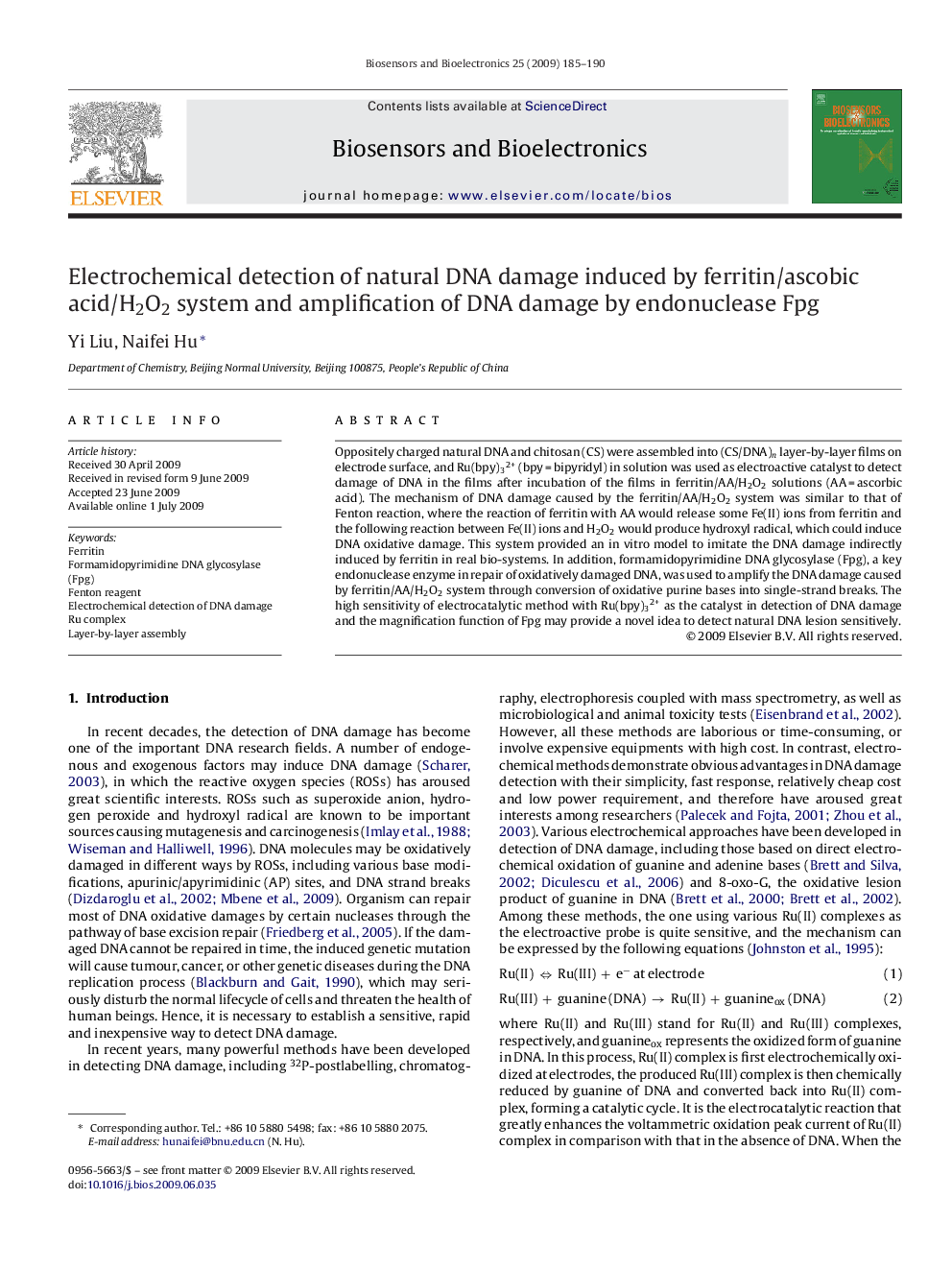| Article ID | Journal | Published Year | Pages | File Type |
|---|---|---|---|---|
| 868294 | Biosensors and Bioelectronics | 2009 | 6 Pages |
Oppositely charged natural DNA and chitosan (CS) were assembled into (CS/DNA)n layer-by-layer films on electrode surface, and Ru(bpy)32+ (bpy = bipyridyl) in solution was used as electroactive catalyst to detect damage of DNA in the films after incubation of the films in ferritin/AA/H2O2 solutions (AA = ascorbic acid). The mechanism of DNA damage caused by the ferritin/AA/H2O2 system was similar to that of Fenton reaction, where the reaction of ferritin with AA would release some Fe(II) ions from ferritin and the following reaction between Fe(II) ions and H2O2 would produce hydroxyl radical, which could induce DNA oxidative damage. This system provided an in vitro model to imitate the DNA damage indirectly induced by ferritin in real bio-systems. In addition, formamidopyrimidine DNA glycosylase (Fpg), a key endonuclease enzyme in repair of oxidatively damaged DNA, was used to amplify the DNA damage caused by ferritin/AA/H2O2 system through conversion of oxidative purine bases into single-strand breaks. The high sensitivity of electrocatalytic method with Ru(bpy)32+ as the catalyst in detection of DNA damage and the magnification function of Fpg may provide a novel idea to detect natural DNA lesion sensitively.
